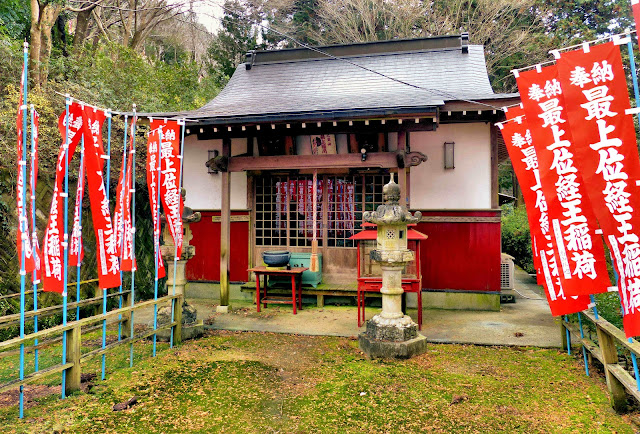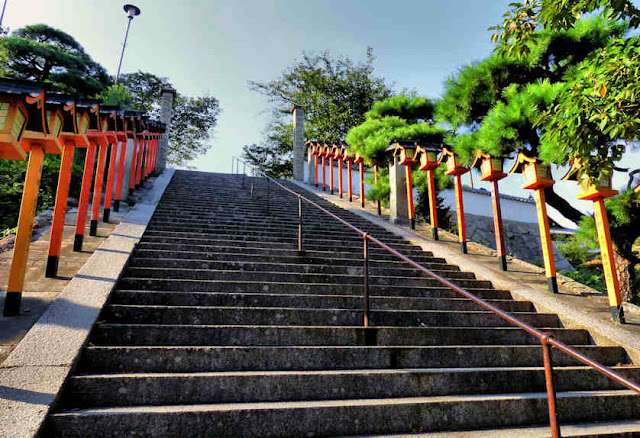As well as the main 33 temples, the Chugoku Kannon Pilgrimage also has, like many pilgrimages, "extra" temples on the route not part of the 33.
In Onomichi, Saigokuji is one such temple. The previous example was
Tanjoji Temple in Okayama.
Saigokuji is a huge complex, approached by a long road lined with cherry trees so very spectacular in season.
The Niomon dates back to 1648 and has a fine pair of Nio guardians.
A giant pair of straw sandals measuring more than 2 meters hang there and are the symbol of the temple.
From the Niomon 108 steps lead up to the main temple.
The temple claims to have been founded by Gyoki in the early 8th century.
Most of the temple burned down in 1066 but was restored under the orders of Emperor Shirakawa.
He made it an Imperial temple and it became the largest temple complex in the Sanyo Region with over 100 branch temples.
It remains the largest temple in Onomichi.
The temple was burned down again in the late 14th century. The current Kondo, Golden Hall was rebuilt in 1386 and is an Important Cultural Property.
The pagoda was rebuilt in 1429 and is also an Important Cultural Property.
The Jibutsu Hall, above, has an entry fee to enter, so not sure what is on display.
The main hall is free to enter.
The honzon is a Yakushi Nyorai. It is an Important Cultural Property, but is a Secret Buddha, so cannot be seen.
There is a "stand-in" in front of the curtain that hides the shrine holding the honzon.
As well as being on the Chugoku Kannon Pilgrimage, Saigokuji is also on the Sanyo Flower Temple Pilgrimage, The Chugoku Yakushi Pilgrimage, and the Bingo Kannon Pilgrimage.
Other halls within the complex are the Fudo-do, Bishamon-do, Daishi-do, and a Miroku-do.
The previous post in this series on day 10 of my walk along the Chugoku Kannon Pilgrimage was on the nearby
Jodo-ji Temple complex.










































































